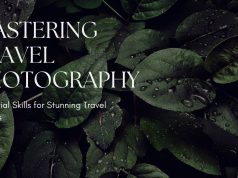Few spectacles rival the celestial ballet of the Aurora Borealis. Every winter, polar skies ignite in curtains of green, pink, and violet light, captivating photographers, nature lovers, and adventure seekers alike. Chasing the Aurora is more than just a bucket-list goal—it’s an immersive experience in some of the planet’s most remote, rugged, and culturally rich regions. In this guide, we’ll unpack everything you need to plan an unforgettable Northern Lights journey: where to go, when to travel, what to pack, how to photograph the display, and how to travel responsibly in fragile Arctic environments.
Understanding the Aurora Borealis
The Northern Lights arise when charged particles from the sun collide with Earth’s magnetic field, igniting molecules in the upper atmosphere. Though scientific, the effect is purely magical: curtains, rays, and arcs of light that dance overhead. Colors vary by altitude and composition—green and yellow are most common, while red, violet, and blue can appear under optimal conditions. To appreciate the phenomenon fully, learn basic aurora forecasting metrics like the KP index, which measures geomagnetic activity on a scale from 0 (quiet) to 9 (extreme). A KP of 3 or higher typically yields strong displays at higher latitudes.

Top Destinations for Northern Lights Viewing
While the Aurora can be seen from many high-latitude regions, some spots offer higher success rates, excellent infrastructure, and unique local culture.
- Tromsø, Norway: Nestled above the Arctic Circle, Tromsø boasts modern amenities, guided tours, and lively Sami cultural experiences. High KP nights often illuminate the fjords.
- Reykjavík & Southern Iceland: Iceland combines accessible Reykjavik basecamps with remote Dark Sky preserves. Consider self-drive tours to Ólafsfjörður or Eastfjords for minimal light pollution.
- Yellowknife, Canada: Known as the Aurora Capital of North America, Yellowknife offers ice-road adventures, ice fishing, and sturdy glass-igloo lodges that maximize viewing comfort.
- Fairbanks, Alaska: With clear skies 243 nights a year, Fairbanks features aurora cabins, dog-sled treks, and evening charter flights above the cloud layer.
- Greenland: For the truly off-grid traveler, Sisimiut and Kangerlussuaq offer pristine horizons, traditional Inuit culture, and intimate lodges under near-constant darkness in mid-winter.

When to Go
Peak Northern Lights season aligns with the dark, clear winter months. Generally, late September through early April is best. The equinox months of March and September often produce heightened geomagnetic activity. Aim for dates around new moons to minimize ambient light. Additionally, late November to February deliver extended hours of darkness—ideal for both aurora hunters and photographers seeking deep, star-filled skies.
How to Get There
Major gateways include Oslo (Norway), Reykjavík (Iceland), Yellowknife (Canada), and Fairbanks (Alaska). From those hubs, regional flights or rental cars will deliver you to remote lodges and viewpoints. In Norway and Iceland, well-maintained roads allow self-drive adventures, while in Canada and Alaska, small prop planes and ice roads may be your only link to isolated camps. Book transfers and local guides in advance during high season to secure the best rates and ensure timely pick-ups for prime aurora hours.
What to Pack
Arctic conditions demand rigorous cold-weather gear. Key items include:
- Insulated parka rated for -30°C (-22°F) or lower
- Thermal base layers (merino wool preferred)
- Waterproof, insulated boots with good traction
- Wind-proof gloves and mittens with liners
- Warm hat and neck gaiter or balaclava
- Hand and foot warmers
- Headlamp with red light mode (preserves night vision)
Also pack moisture-wicking socks, sunglasses (for snowy glare), and a sturdy backpack to carry extra layers, snacks, and camera equipment.
Photography Tips for Capturing the Lights
To immortalize the Aurora, you’ll need manual camera controls and a stable platform. Here’s how to get crisp, colorful shots:
- Use a sturdy tripod to eliminate shake during long exposures.
- Set ISO between 800–3200 depending on brightness; higher ISO for fainter displays.
- Choose an aperture of f/2.8–f/4 to balance depth of field and light intake.
- Experiment with shutter speeds of 5–25 seconds—adjust based on aurora movement.
- Disable long-exposure noise reduction for faster shot sequences.
- Compose with a foreground subject (trees, cabins, ice formations) to add depth and scale.
Remember to warm batteries close to your body—cold temperatures can sap power quickly.
Immersive Cultural Experiences
Northern Lights trips aren’t just about spectacle; they’re a window into Arctic life. Join reindeer sledding tours led by Sámi herders in Norway, stay in traditional turf houses in Iceland’s Westfjords, or learn Inuit throat singing in Greenland. Sample regional cuisine—smoked char, reindeer stew, cloudberry desserts—and soak in local hot springs beneath the aurora. These cultural touchpoints enrich your journey and support indigenous communities that call the far north home.

Sustainable and Responsible Travel
The Arctic environment is fragile. Practice leave-no-trace ethics: avoid disturbing wildlife, limit campfires, and pack out all waste. Opt for eco-certified lodges that use renewable energy, support local guides rather than large operators, and offset your carbon footprint for flights. When photographing, maintain respectful distances from wild animals and steer clear of disrupting their natural behaviors under the aurora’s glow.
Sample 7-Day Northern Lights Itinerary
Day 1: Arrival and Orientation
Fly into Tromsø or Reykjavík, settle into your hotel, attend an evening briefing on aurora forecasts and safety, then head out on an introductory northern lights tour.
Day 2: Midnight Photography Workshop
Spend the day exploring local museums, then join a pro photographer after dark to learn long-exposure techniques and aurora composition.
Day 3: Snowmobiling and Ice Hotel Stay
Zip across frozen lakes on snowmobiles, then sleep in a sculpted ice suite. Evening aurora alert wakes ensure you catch any overhead displays.
Day 4: Cultural Immersion
Visit a Sámi camp or Inuit village, feed reindeer, hear traditional stories, and savor local delicacies by a crackling fire.
Day 5: Glacier Hike or Dog-Sled Adventure
Choose a guided glacier trek with crampons or mush your own team of huskies across snowfields before hunting the lights from a wilderness cabin.
Day 6: Free Exploration and Local Farewell
Shop artisan markets for woolen goods, sample craft microbrews or aquavit, then gather for a final night-time aurora chase in a private minibus.
Day 7: Departure
Enjoy a relaxed breakfast under any lingering aurora glow, transfer to the airport, and carry home memories that will last a lifetime.
Conclusion
Chasing the Northern Lights is more than a quest for visual splendor; it’s a journey into the heart of polar landscapes, local traditions, and your own spirit of adventure. By traveling responsibly, packing wisely, and choosing the right destinations and guides, you can maximize your chances of witnessing nature’s most spectacular light show. Whether you’re a seasoned photographer or a first-time aurora seeker, this guide equips you to plan, pack, and prepare for an Arctic experience that will illuminate your senses for years to come.








